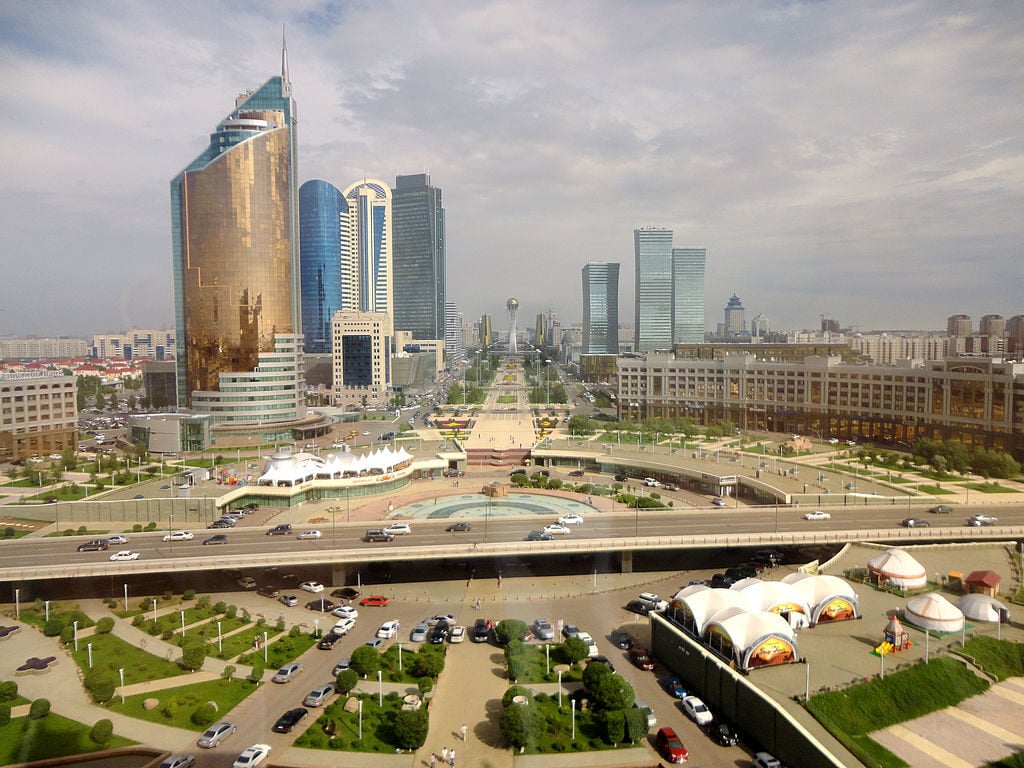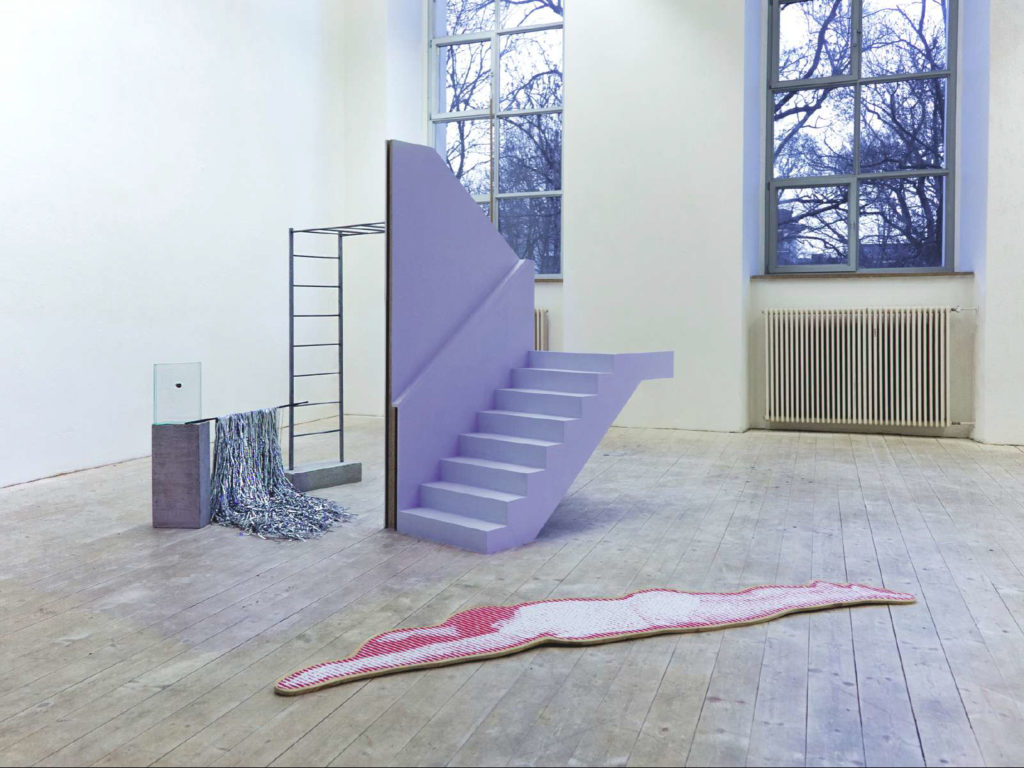Art & Exhibitions
Under a Dark Cloud of Controversy and Confusion, Kazakhstan Cancels Its Inaugural Venice Biennale Pavilion on Facebook
What could have been a major moment for Kazakh artists devolved into a flurry of dubious Facebook posts.

What could have been a major moment for Kazakh artists devolved into a flurry of dubious Facebook posts.

Kate Brown

What was supposed to be a bright start for Kazakhstan at the Venice Biennale has collapsed into a state of disappointment and confusion, as the nation has canceled plans for its first-ever Biennale pavilion just two months before the world’s most prestigious art event is set to open and one month before installation was to begin.
Last fall, the pavilion’s commissioners, including officials from the country’s foremost institution, the National Museum of Kazakhstan, as well as a representative from the Ministry of Culture and Sports, hired two organizers for their inaugural event: the Berlin-based curator Nadim Julien Samman and Roza Abenova, then head of contemporary art at the National Museum.
But in mid-March, the entire initiative was abruptly called off by the museum over Facebook.
“I am disappointed that a viable project was smothered in opaque circumstances, with little regard for artists and curators,” Samman tells artnet News, adding that he learned of the official cancellation through Facebook. In the comments section, he was informed that he would be not be paid for the five months of preparatory work he had already done, including international studio visits, due to budget cuts.

Almagul Menlibayeva, Butterflies Of Aisha-Bibi, 2010, Hd Video, Courtesy American-Eurasian Art Advisors LLC.
Beginning last fall, Samman made trips to Kazakhstan, where he says he signed the draft of a contract that was never returned to him. Assured that all was underway, he had been to Venice to look at venues and to introduce museum officials to his contacts there.
Something changed in the new year. Both Abenova and Samann say that communications from the National Museum became sluggish before it slowed to a complete stop under the new acting director Almaz Nurazkhan. By February 27, Abenova officially withdrew from the project due to a lack of resources.
Then, on March 7, an entirely new curatorial team was named in press materials, and it included Nurazkhan, the UK art historian James Putnam, and Russian academic Viktor Misiano. “This alternative team could only have [been named] if the Biennale secretariat received new information in a signed letter from Ministry of Culture and Sports of the Republic of Kazakhstan,” Samman says.
In a Facebook post published shortly after the new curatorial team was announced, Abenova expressed outrage at the sudden update, calling it “lawlessness.” To add to the storm of uncertainty, Misiano tells artnet News that he was never asked to work on the pavilion and did not know any of the other curators he was listed with. He speculates that maybe his name appeared on the new list because he had been active in the cultural scene in the region, and had initiated the Central Asian pavilion in Venice in 2005. “The lack of professional ethics is shocking,” Misiano says.
By March 13, Kazakhstan’s pavilion was entirely absent from an updated press kit issued by the Venice Biennale. A week later, and upon realizing Samman was being refused pay, Abenova resigned from the National Museum in protest.
As for Samman’s salary, Nurazkhan told The Art Newspaper that “any binding treaty between the National Museum and Nadim Samman was not signed. He was informed [about this].” Nurazkhan also said that it all came down to money and procedural failings: “We affirm that selected works were not subject to any censorship. Lack of funding and non-compliance with procedural issues are the cause of Kazakhstan’s non-participation in the Biennale.” Samman says he and some of the artists who were involved are now seeking legal advice.
artnet News tried multiple times to reach Nurazkhan or a spokesperson from the museum but did not hear back. Repeated phone calls to the museum were either unanswered or redirected.

Installation by Gaisha Madanova that was set to be a direction for the newly commissioned work for Venice.
Just last year, the country was pouring support into an ambitious initiative called “Focus Kazakhstan,” a four-part exhibition program in four cities that included London and Berlin. It sought to introduce young artists from the country to the wider art world. But the loss of the pavilion has undermined those efforts and disappointed members of the Kazakh art scene, who were excited to present in Venice.
“Kazakhstan is home to serious artists who deserve to meet an international public, and who require a national cultural infrastructure that reflects their values,” Samman says.
Abenova says that the art community had previously applied multiple times for funding with the Kazakh government since 2015 in hopes of establishing the country at the biennale, but that state officials had refused to authorize any events. This year seemed, anyways at first, to be different. “The art community of Kazakhstan is concerned about this situation,” she says. “Why is one of the most stable countries in Central Asia… still not participating on the most important and prestigious stage for contemporary art?”
Kazakhstan is one of five countries from the former Soviet Union that still is not involved in the biennale.
But the hardest hit may be the Kazakh artists who were to be involved. Artist Gaisha Madanova says news of the 11th hour cancellation was a complete disaster for her. To prepare for the show, she quit her full time job and abandoned two other exhibitions to dedicate time just to Venice. She says the cancellation of the show “ruined not only this project, but also undermines the credibility of Kazakhstan’s” artists.
One of the nation’s foremost contemporary artists, Almagul Menlibayeva, says the situation puts the focus on “the serious problem with internal corruption of Kazakh society” and its government, calling it a “post-soviet centralized way of working.”
“We were suffering and fighting [for this pavilion] for many years,” she says “I think the government should apologize to [Sammann and Abenova]. And we are not going to give up.”